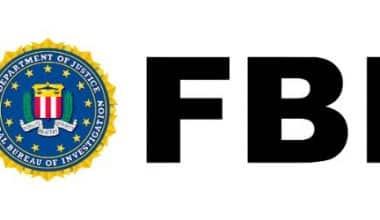The Swastik logo is the oldest cross and symbol in existence. In the West, the Swastik logo frequently symbolizes terrorism and mass slaughter. But long before the Swastik symbol became associated with Nazi terror in the late 1930s, it was an auspicious sign used to invoke the power of good fortune in many Asian countries, such as India. In this piece, we will be discussing the meaning of the Swastik logo and the history behind it.
What Is the Meaning of the Swastik Logo?
The Swastik logo is an equal-sided cross with arms bending at right angles and rotating all in the same direction, typically clockwise. The Swastik logo is a universally recognized sign of wealth and fortune in both the ancient and contemporary worlds.
The phrase “conducive to well-being” (svastika in Sanskrit) is the word’s root. It appeared frequently on ancient Mesopotamian coins.
The left-hand Swastik logo was used in Scandinavia to represent the hammer of the god Thor. The Swastik logo also appeared in early Christian and Byzantine art. It also appeared in North America as well as in South and Central America (among the Maya).
Uses of Swastik Logo
The Swastik logo is still the most popular auspicious symbol that Hindus, Jainas, and Buddhists in India use.
The Jainas also consider it to be the symbol of their seventh Tirthankara (saint), because of its four arms. They claim it serves as a reminder to worshippers of the four potential realms of rebirth: the animal or plant world, hell, Earth, or the spirit world.
The Hindus (and Jainas) also use it to mark thresholds, doors, offerings, and the first pages of their ledger books.
The Swastik logo represents the Buddha’s feet or footprints in the Buddhist tradition. Modern Tibetan Buddhists wear it as a decoration on their clothing, and also frequently use it to mark the beginning and end of inscriptions.
The Swastik entered Chinese and Japanese iconography with the advent of Buddhism. It since come to represent diversity, richness, prosperity, and long life.
Single Swastik motifs were frequently utilized by the Ancient Greeks to adorn their pots and vases. One fragment in the collection, dating to roughly the 7th century BCE, depicts a Swastik painted under a goat’s belly with limbs that resemble unfurling tendrils.
How to Distinguish Between the Right and Left Hand Swastik Logo
You can distinguish the left-hand Swastik from the right. This is because the left-hand Swastik rotates counterclockwise while the right-hand Swastik moves in a clockwise motion.
People also regard the right-hand Swastik as a solar symbol and it mimics the Sun’s daily course, which in the Northern Hemisphere appears to move from east to south to west, through the rotation of its arms. However, they associate the left-hand Swastik with magic, the terrifying goddess Kal, and the night.
Swastik Logo Origin
The Swastik logo was first proposed as a symbol for all anti-Semitic groups in 1910 by the poet and nationalist ideologist Guido von List.
In 1919–1920, the National Socialist Party adopted the symbol. With its oblique arms turned clockwise, the Swastik (German: Hakenkreuz) became the country’s logo in Nazi Germany.
The German national flag was established on September 15, 1935. It consists of a black Swastik on a white circle with a red background. Though neo-Nazi groups still favor the Swastik, this use of it during World War II came to an end with the German surrender in May 1945.
History of Swastik: What Is the Origin Story
Around 7,000 years ago, the Neolithic Vinca civilization in south-eastern Europe started to produce single swastikas. They did, however, start to expand across all of Europe during the Bronze Age. In the museum’s collection, there are clay jars with a single swastika around the upper half that are about 4,000 years old.
During World War One, American military troops used the Swastik logo, and as late as 1939, RAF aircraft were flying with it. As the Nazis gained power in Germany in the 1930s, the majority of these beneficial uses came to an end.
The Swastik was used by the Nazis because German professors who were translating ancient Indian literature in the 19th century recognized similarities between their own language and Sanskrit.
They came to the conclusion that Indians and Germans must have had an ancestor, and they conjured up an Aryan race of white, god-like warriors.
Anti-Semitic nationalist organizations seized on this concept and hijacked the swastika as an Aryan emblem. This is to reinforce a sense of distant ancestry for the Germanic people.
The Nazi flag’s characteristic white circle and red backdrop, with the black straight-armed Hakenkreuz (hooked cross) on it, would go on to become the most despised emblem of the 20th century, forever associated with the horrors of the Third Reich.
“The meaning of the Swastik logo represents terror, oppression, and extermination of the Jewish people. It’s a metaphor.
At the end of the war, the Swastika was outlawed in Germany. However, in 2007, Germany made a failed attempt to enact a ban across the EU.
Up until World War Two, the swastika was a common embroidered motif in Eastern Europe and Russia. Pavel Kutenkov, a Russian author, has cataloged approximately 200 variations in the area. nonetheless, the hakenkreuz.
Swastik Meaning
The Sanskrit term svastika, which means “good fortune” or “well-being,” is where the word Swastik originates. The pattern, a hooked cross, appears to have been utilized for the first time in Eurasia as early as 7000 years ago.
It may have been used to symbolize the sun’s motion across the sky. In Buddhism, Jainism, Odinism, and Hinduism, it is still seen as a holy symbol. Swastik is a common sight in a temple or a home in India or Indonesia. It is a common sight in temples or homes. Swastikas have a long history in Europe and can be seen on objects from pre-Christian cultures.
As European interest in the ancient civilizations of the Near East and India grew, the sign saw a renaissance in the nineteenth century. The German archaeologist discovered numerous artifacts during his length.
Does the origin of Swastik have a connection to the Germans?
Heinrich Schliemann, a German archaeologist, found the hooked cross near the location of ancient Troy while conducting extensive excavations. He made a connection between it and shapes of a similar nature discovered on German pottery and hypothesized that it was “an important religious symbol of our remote ancestors.” Other academics and philosophers from Europe connected the emblem to a common Aryan culture that pervaded both Europe and Asia.
The Swastik was frequently used in Europe around the start of the 20th century. It has many meanings, with good fortune and prosperity being the most prevalent.
Racist organizations, however, adopted the research of European linguists and other academics using the swastikas as a sign of “Aryan identity” and German nationalist pride.
The Swastik was used by other political parties in Germany besides the Nazi Party. Several far-right nationalist movements embraced the swastika after World War I.
The History of Swastik logo: Nazi flag
The Swastik, which was used on the Nazi flag, election posters, armbands, medallions, and badges for the military and other organizations, became the most identifiable representation of Nazi propaganda.
The Nazi flag’s color pattern purposefully drew inspiration from the Imperial German flag (1871–1918). It is still recognizable to many Germans who opposed democracy and the Weimar Republic. The swastika and color combination created a potent trademark that was forever associated with the Nazi Party. The Communist Party and the Nazi Party were the outliers to this rule in democratic Germany, where the majority of political groups lacked a logo.
The Swastik, which Hitler used as a reference in Mein Kampf, as well as election posters, armbands, medallions, and insignia for the military and other organizations, became the most identifiable representation of Nazi propaganda. The swastika was a formidable symbol used to terrorize Jews and other people considered enemies of Nazi Germany as well as to inspire pride in Aryans.
The History of Swastik: Hitler Regime
After assuming power in 1933, Hitler’s regime immediately replaced the black-red-gold flag of the Weimar Republic, which was mandated by the constitution and identified with Germany’s democratic traditions.
On March 12, 1933, President Paul von Hindenburg and Adolf Hitler issued a directive stating that the swastika flag would now be flown alongside the former German Imperial standard (black-white-red).
The directive stated, “These flags connect the mighty rebirth of the German nation with the majestic past of the German Empire.” Together, they show both the unity of the national groups of the German people and the power of the state.
Two months later, on May 19, 1933, the Nazi government made it illegal to “use in public symbols of German history, of the German state, and of the national revolution in a way that would hurt the sense of dignity of these symbols.”
The law was designed to forbid private advertising, businesses, and other parties from using the Swastik and other Nazi symbols or images in marketing their products and services without the regime’s consent.
At that time, a wide variety of goods with swastikas, Hitler’s face, or other emblems were overrunning the German market, including coffee, cigarettes, and cake pans. The new law subjected makers of illegal goods to criminal prosecution.
The History of Swastik: Nuremberg Race Laws
In September 1935, the German government enacted new legislation aimed at further depriving Germany’s Jews of their rights during the annual Nazi Party rally in Nuremberg. The Reich Flag Law (September 15, 1935), which established the swastika flag as the German Reich’s official national flag, was one of the so-called Nuremberg Race Laws.
The Reich Flag Law was a result of the Nazi government’s rage about what happened in New York during the summer and fall of 1935. To protest recent anti-Jewish incidents in Berlin, several hundred anti-Nazi protesters gathered around the German passenger ship SS Bremen on July 26. They then docked at a terminal in New York.
A crowd of protesters tore the Swastik banner from the ship’s bow and threw it into the river. Police in New York arrested some of the demonstrators. Immediately after, the German government officially protested to US authorities.
In response to a court ruling that discharged the bulk of the defendants, the Nazi administration passed the Reich Flag Law.
The Swastik was outlawed and there were cultural disagreements following the collapse of Nazi Germany.
The History of Cultural controversies and Postwar Bans on the Swastik
Allied governments prohibited Nazi groups, striping them of their message and emblem, and made further distribution unlawful after toppling Nazi Germany in 1945 and assuming control of their nation.
Successive German administrations upheld the ban on Nazi symbols and propaganda, including the Swastik. Nazi symbols are now illegal to display in public, including online, in Germany and other European countries. Anyone found to be in violation of this rule is liable to legal action.
Because of the country’s customs and laws safeguarding free expression, it is acceptable to display Nazi emblems and propaganda in the United States.
The Swastik has evolved into a contentious cultural symbol at various points in history and in many countries.
Since the 1950s, some criminal motorcycle gangs in the United States have worn Nazi symbols to show that they are bad people. In the late 1970s, punk rock musicians and fans often wore swastikas as a sign of youth rebellion against the status quo.
Nazi emblems can have neutral or even positive implications in nations with little to no historical connection to Nazi ideology and mass slaughter. Some nations have given the Nazi symbol, which is the Swastik, other Nazi symbols, and even Adolf Hitler, a new meaning, using them to represent law and order, national power, discipline, and anti-colonialism.
Swastik India
The Swastik logo is one of the most popular auspicious symbols in India. It is one of the oldest crosses and the oldest symbols in existence. The Swastik combines the letters “L” for luck, “L” for light, “L” for love, and “L” for life. It exists in Buddhist statues, ancient Chinese money from 315 BC, ancient Rome, Greek city excavations, and ancient Rome. Even the Southwest Indians utilize it as an amulet.
According to folktales, mound builders, and cliff dwellers of Mexico, Central America regard the Swastik to be a charm. They think it will fend off evil and provide the bearer good fortune, a long life, and riches.
The Swastik sign carries apprehension in contemporary times. Despite being unlawful in many other nations, the vibrant crimson swastika sign remains a crucial component of religious festivals in many countries including India.
A Swastik history that dates back to an extremely advanced culture in India.
A swastika is also a representation of Lakshmi, the goddess of fortune and wealth. The following customs increase wealth: On Diwali, you should make a swastika and put a statue of Goddess Lakshmi on top of it. Just Attach the panchdhatu-made swastika sign to the home’s front door.
You can bring good luck and health for a long time if you sleep on top of the swastika sign for six straight days.
It might be time for us to take back what the swastika symbol originally stood for: love, brotherhood, and light.
Mythological interpretations of the India Symbols Swastika
According to astrology, Swastik has a close relationship with mythology.
- In India, it is a belief that The four sides of the swastika represent the four directions that Lord Vishnu’s four limbs face.
- Many astrologers continue to hold the view that the swastika’s four sides correspond to the four faces of Lord Brahma.
- It is a belief that the four Hindu Vedas—Rigveda, Yajurveda, Samaveda, and Artharvaaveda contain the true meaning of life. The four edges of the Swastika stand in for these four Vedas
- Astrologers assert that the vertical lines in a swastika represent Lord Shiva in the form of the jyotirlingas and self-rebirth, respectively.
- The basic explanations for this are two. The swastika’s right side depicts the sun’s rotation. Two: The sun is the only source of life’s nourishment, and the swastika symbolizes that nourishment.
Power of Swastik
Swastik has a significant role in Vastu Shastra in addition to religious activities.
When engaging in an auspicious action, people believe the power of the Swastik symbol will improve the outcome’s fortune. Navratri is now taking place. Making the swastika symbol at home will therefore be fortunate even during Navratri. Vermilion or turmeric are both useful for making the Swastik symbol increase its power.
The Benefits of Swastik
- Making the Swastika is the first step in every auspicious ritual. According to popular belief, the power of the Swastik invokes the blessings of the trinity of Lord Brahma, Lord Vishnu, and Lord Shiva. As a result, there are numerous ways that the power of the Swastik can both protect and bless people.
- According to popular belief, the swastika emblem can drive evil spirits out of a home and protect residents from black magic and evil eyes. You can employ Swastika in a variety of ways to ward off evil, including the following.
- Simply drawing the Swastika symbol with aalta, a red substance the Hindus believe to be frightful, on the entrance door deters evil spirits.
- The imprinting of the Swastika symbol on new automobiles protects locals from accidents.
- It is a belief that if your home has Vashu Dosh, you can purchase a navratna) swastika made of all nine gems and place in a place of worship. Additionally, it offers a defense against the negative effects. Vashu-Dosh
- Money cannot buy the ultimate tranquility. The only way to achieve it is through spirituality. A person is spiritually enlightened when they meditate by meditating on the swastika symbol.
- These children are extremely intelligent due to the blessings of all gods and planets. They will become rich, successful, and most importantly spiritual people as they age.
- By simply focusing on the swastika symbol, one is able to find relief from the tension. The swastika is thought to evoke positivity in an individual. In addition to being able to maintain healthy sleep patterns, such a person is neither depressed, stressed, or anxious.
Ancient Discoveries of Swastik
A little ivory miniature of a female bird is one of the most sought-after objects in the collection. It was discovered in 1908 near the Paleolithic settlement of Mezin, which is not far from the Russian border. Its material was a mammoth tusk.
The Swastika pattern is the oldest one that to exist. after finding a detailed pattern of interlaced swastikas on a bird’s torso. Even radiocarbon dating reveals that it is 15,000 years old.
The discovery of the bird alongside many phallic objects supports the idea that the swastika pattern was used as a fertility symbol.
The swastika meander design on the bird is remarkably similar to the naturally occurring pattern shown on a cross-section of ivory, a paleontologist by the name of Valentina Bibikova found it in 1965.
What Is the Manji in Japan?
In Japan, Swastika refers to manji. The “symbol of the temple” is the definition that is most familiar to the Japanese people. It is a typical sign for a Buddhist temple because there are no Nazi overtones in Japan use it to mark them on maps.
Before the Nazis hijacked it, it was a symbol of luck for countless centuries. It is seldom useable as a word in sentences even though it means “a promise of good things to come.”
What Is Zzz Japanese?
It implies a profound sleep. That word is SLEEPY. ズッ Zu~tsu and I believe it typically refers to snoring.
What Is Chi Called in Japan?
The hiragana consonant ち (chi). Its katakana counterpart is チ (chi). It comes after syllable seventeen in the gojon sequence. One of the Japanese kana, which individually stands for one more, is, written in ち, hiragana, or in チ katakana. Despite the fact that the real pronunciation is [ti] t͡ɕi both are phonemic /ti/.
What Is Meant by the Swastik Symbol?
The phrase “conducive to well-being” (svastika in Sanskrit) is the word’s root. It appeared frequently on ancient Mesopotamian coins.
What Is the Importance of Swastik?
Hindus hold the emblem of Swastik (Swastika), which stands for peace, good fortune, hope, harmony, and prosperity, in the highest regard. Hinduism views the right-facing symbol, known as Swastik, which represents Surya, as a symbol. This right-faced Swastik is auspicious and fortunate.
Why Was Swastik Made?
The Swastika and Om are considered to be lucky symbols. Making a “swastika” supposedly neutralizes the effects of negativity. Drawing a “Swastik” in the northeast direction is considered lucky as it emits positive energy.
What Is the Buddhist Symbol for Peace?
The Buddhist symbol for peace is the Swastik. Nearly every culture has utilized the Swastik at some point in time. The Buddhists still make use of it now. It represents tranquility, harmony, and well-being.
Where Do You Put a Swastik?
You can put the Swastik in the northeast corner of your home’s puja room. Additionally, you might hang it from the doorway to your room.
Where Do You Keep Swastik?
You can keep the swastik at the front door of the house to help drive away bad energy. You must be thinking about how to make the main door Swastik.
Conclusion
The Swastik logo has a nice and interesting history that goes back to both Asia and Europe. The Swastik logo, other Nazi symbols, and even Adolf Hitler were given a new meaning, using them to represent law and order, national power, discipline, and anti-colonialism.






